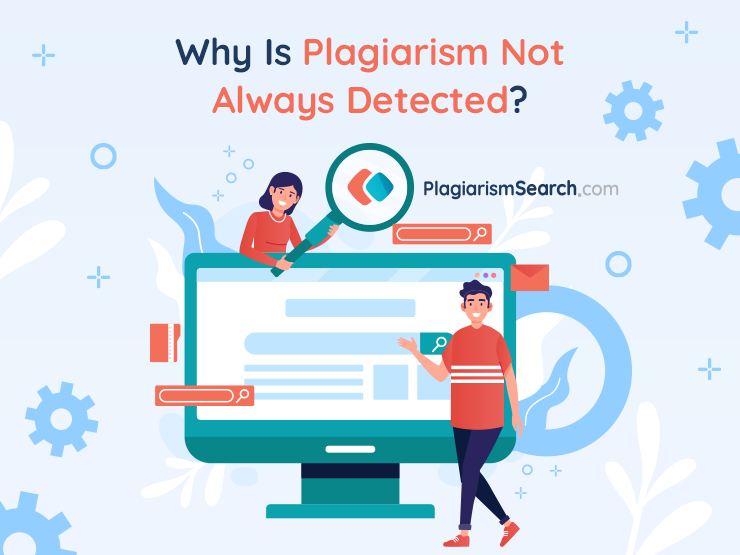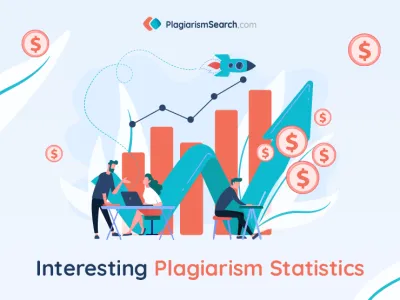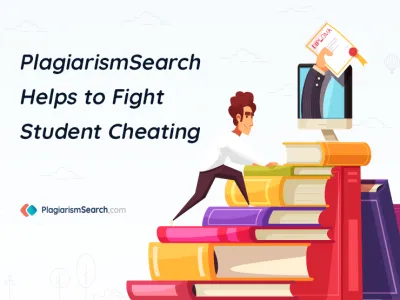
Why Plagiarism Is Not Always Detected
A common comparison of plagiarism in education and plague in healthcare makes sense! Its scope and pace of spreading are enormous. Students around the globe seek easy life with no pressure of writing assignments; so, they get someone else’s papers and submit them as their own ones. Still, they have to exert more and more efforts and apply their creativity not to get caught. In some cases, students would invest a lot of time and so much effort into hiding their dishonesty that they could create outstanding original projects instead! PlagiarismSearch ensures premium level check against academic databases, billions of web pages, and its own store of completed papers to identify duplicate content in the document. Using different tactics, the students believe that they can trick the most advanced plagiarism checker, but we have developed a sophisticated system of tracing originality issues. The students keep improving their tactics and so do we!
Why Plagiarism Is Not Always Detected
The technologies of plagiarism detection should develop all the time as they should address new challenges that appear every day in the academic life, journalism, and science. Students check plagiarism online to be sure that their papers can be submitted without any blame for unoriginality, while the professors have to check whether the students try to cheat the system.
Here are the most typical clues which give an idea that the paper may be plagiarized:
- lots of footnotes and spelling mistakes;
- change in the quality of writing of a particular student;
- off-topic parts in the paper;
- outdated facts or quotes;
- different formats, font types and sizes, and so on.
These are visual indications of issues with the papers; however, but in case they are absent, it is vital to check the plagiarism with some plagiarism checker to be sure that the principles of academic integrity are followed. Still, it is not easy to detect plagiarism as the students try to cheat, using new ways of tricking as they know that colleges and universities use a plagiarism checker for all the assignments.
Cheating Techniques that Make Plagiarism Detection Complicated
- Only Latin Characters: Identification of Replaced Letters
One of the easiest tricks that the students use to make it impossible for the plagiarism check software to trace their cheating is to replace the characters. Students have got really inventive lately! There are some letters from Latin alphabet which are repeated frequently in the English language. They look the same in Cyrillic and Greek alphabets. How do the students cheat? They make an automatic or manual replacement of ‘a,’ ‘e,’ ‘o’ and other Latin letters of this kind with similar letters from other alphabets. It takes a few minutes to do that but the result is amazing. Most of the plagiarism checkers will confirm that the text is truly original. So, the changes are not spotted and the cheaters submit copy-pasted works with no fear that they can be caught.
PlagiarismSearch has introduced an option ‘Only Latin characters’ which makes it impossible to keep back the truth even for the most sophisticated cheaters. Detection of replaced characters is the function that makes this software different from an unreliable free plagiarism checker. It has greatly increased the efficiency of identifying plagiarized content in the students’ works.
- Fake References
Search for reliable sources and finding the required details to confirm the arguments is a time-consuming activity. Some students believe that it is fine just to invent the titles of fake sources or prevent quoting from existing sources with fake numbers of pages. The idea looks like an in-text citation, but it is not. If you check for plagiarism free, the chances that you will not trace this kind of plagiarism are high.
- Invisible Characters
It is possible to delete all the spaces and replace them with some white characters not visible in the text.
The text will look like this: ‘PlagiarismSearch is an advanced plagiarism checker,’ but actually it will be like this: ‘PlagiarismSearch.is.an.advanced.plagiarism.checker.’ Since all the periods are white, there is no visual difference between the sentences. The only thing is a simple plagiarism detection tool cannot trace copy-pasted content in the second text. PlagiarismSearch displays the words no matter which color of the text the student has chosen.
- Paraphrased Fragments
This technique requires more time as the students have to change the word order, replace the vocabulary, and make the sentences look entirely different from their original versions. Thus, the students believe that the plagiarism software cannot detect the changed parts and do not cite the sources at all.
Due Care of PlagiarismSearch: What Do We Do to Fight Plagiarism
- Evaluation of the online links despite the ban of hostings
- A wide range of strategies to come round the ban through good proxy
- A huge database of completed papers
- Not excessive load on the website to prevent bans
- Individual databases every client can create to prevent self-plagiarism.
When it comes to unoriginal content, both a cheap plagiarism checker and an expensive plagiarism checker show a certain similarity score. A lot of users believe that it is a magical number they can entirely trust, but it is also important to check on the report and see the matching. The score not always represents due documentation of the plagiarism case. If there are lots of font changes, misspellings, underlines words, and shifts in style, it is a nice reason for certain doubts.
A student, a teacher, a publisher, and a blogger know about the benefits of a professional plagiarism checker that can save time and ensure high quality of original writing. It is a matter of crucial importance to find the software that can get out of all the traps and identify plagiarism even if the student has tried really hard to hide it. The likelihood of getting caught should be 100 % for the cheaters who aim at beating all kinds of plagiarism software. The algorithms of PlagiarismSearch are being updated all the time to increase the accuracy of similarity reports and uphold the principles of academic integrity.



